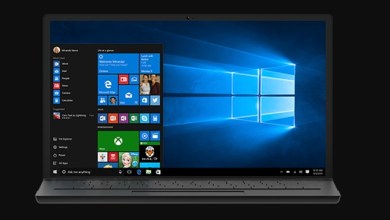Windows
Get the latest news and updates on Microsoft Windows Operating systems, Features, Best picks, Reviews, and How-to tutorials on this section of our website.
-
 April 24, 2023
April 24, 2023There is a small problem with the latest update of Windows 10
The latest Windows 10 update, released on April 11, has caused several issues for users. Along with fixing some bugs…
-
 August 28, 2022
August 28, 2022How to Login to a Comcast Xfinity Router
Do you have an Xfinity router from Comcast at home? If not, you should because one of the top internet…
-
 August 27, 2022
August 27, 2022How to Fix VLC Media Player Not Playing on Windows 11
VLC is regarded as the finest since it supports practically all video and audio formats and has an intuitive user…
-
 July 23, 2022
July 23, 2022How to schedule a shutdown on Windows 11
You can ask your computer to shut down automatically with a simple command, as we detailed in the instruction on…
-
 February 21, 2022
February 21, 2022Windows 11: How to free up and fix high Memory Usage
Has it ever occurred to you that your PC runs slow or crashes for no reason? This could be because…
-
 February 16, 2022
February 16, 2022Google releases Chrome OS Flex for use on any Windows or Mac PC
Chrome OS Flex is a new version of Google’s operating system for PCs. It has just been released and is…
-
 February 6, 2022
February 6, 2022How to activate Windows 11 with a genuine license key
Activating Windows is a task that not everyone has to do. When buying a new computer, it is expected that…
-
 January 26, 2022
January 26, 2022Windows reaches 1.4 billion users, says Microsoft
Satya Nadella has reported the number of Windows users in Microsoft’s financial results presentation. And they are not a few:…
-
 January 25, 2022
January 25, 2022Useful Keyboard Shortcuts in Windows 11
Microsoft has added new keyboard shortcuts in Windows 11 to support the new features and changes implemented in the operating…
-
 January 14, 2022
January 14, 2022How to reset Windows 10 with a single command
“Reset,” “Restore,” or “Recover” an operating system like Windows 10 means returning it to its factory settings, just as it…
-
 January 1, 2022
January 1, 20225 Softwares you shouldn’t have on Windows
Many technology transitions have led to replacements and discontinuations (for example, the transition from Flash to HTML5). Consequently, it is…
-
 December 30, 2021
December 30, 2021Windows 11: How to disable automatic brightness
Today’s notebooks are incredibly complex in terms of technology, functionality, and features, with complex cooling systems and tons of internal…
-
 December 19, 2021
December 19, 2021“Microsoft’s actions look desperate – and yet familiar”
Ever since Chromium moved its browser to basics, Microsoft seems to have gotten bloodshed: it wants to convince Windows users…












